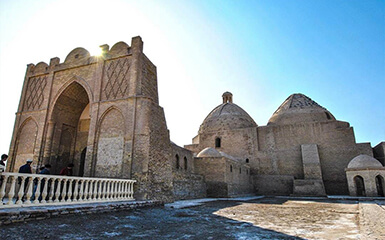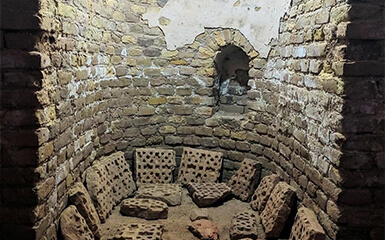Ashgabat
Alem Ferris wheel
State Museum
Fine Arts museum
Wedding Palace
Nisa fortress
Memorial Complex
Ertogrul Gazi Mosque
Neutrality monument
Independence Park
Turkmenbashi Ruhy Mosque
Olympic Village
Ylham Alley
Carpet Museum
Monument of Lenin
Ahal Region
Abivert
Altyn Depe
Annau
Darvaza
Geokdepe
Kowata
Mane baba
Zengi baba
Nedir Shah
Nokhur
Parzdepe
Sarahs baba
Seyit Jemaleddin mosque
Shahrislam
Ulug depe
Mary region
40 cupolas
Akcha Kala
Ancient Merv
Badkhyz
Chilburj
Gebeklytepe
Geok Gumbaz
Gurtly Depe
Kharoba Koshuk
Talkhatan Baba
Yekedeshik
Dashoguz region
Ashyk Aydyn Pir
Devkeshen
Ismamit ata
Kalaly-gyr
Kaplankyr Nature Reserve
Kunya-Urgench
Damla
Balkan region
Dehistan
Yangikala
Awaza
Gozli ata
Kemal ata
Mashat ata
Paraw bibi
Lunar Mountains
Shevlan Baba
Igdy kala
Astana Baba mausoleum

The Astana Baba Mausoleum is a complex of buildings near the Turkmen city of Kerki in the eastern province of Lebap. Its earliest part – the mosque has been erected, when this region was a part of the Turkmen Oghuz state headed by the dynasty of Seljuk.
The complex consists of an open corridor, a square, a portal, a closed corridor, a four-pillar hall, a mosque, a divan, the tomb of Zeydaly and Zubaydali, a covered passage and the Gyzlarbibi cemetery. Gyzlarbibi Cemetery is a later part of the complex. It is built of bricks of different sizes.
The mausoleum comprises a larger building complex, which is characterized by four domes. The facility is entered through a peshtak, behind which a paved path leads to the four buildings. To the west there are two rooms with domed roofs, each with two graves. To the east there are two more rooms, each covered by a dome. One of the rooms houses a single tomb, the other is the main room of a small mosque. It is unclear today who was once buried in the graves.
The building complex was subject to numerous changes and additions over the centuries. The oldest parts, including the peshtak and parts of the mosque, date from the 12th century, other parts, including the double graves in the west of the complex, are significantly newer, probably they were built in the 19th century. The last major structural changes were completed in 1920 on behalf of the Emir of Bukhara.
The Astana Baba Mausoleum is one of the most important pilgrimage sites in Turkmenistan and was visited by many people even during the Soviet era, when pilgrimages were officially forbidden. Thousands of sick people come to the holy place in eastern Turkmenistan every year, because they hope to be cured of their illnesses.
The said legend of the building of the mausoleum is about Ibn Ali Nur Ogly Zuveida, the ruler of Balkh at that time. His only daughter died shortly after her wedding and the grieving ruler ordered the construction of a magnificent mausoleum. This collapsed shortly after its completion and a second and third building in honour of his daughter suffered the same fate. An old man then advised the ruler to use soil and water from Mecca for the construction. The king then built what is now the Astana Baba mausoleum and this time it remained standing after its completion. After his death, the father is said to have been buried next to his daughter.

